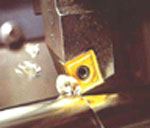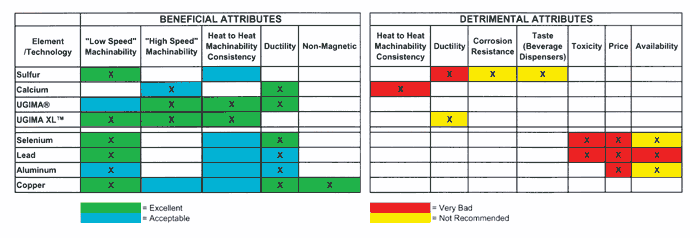Making Stainless More Machinable
Metallurgy marches on, and with that progress comes developments in the ability to engineer more machining friendly stainless steels.
There is good reason to connect alchemy and metallurgy, especially when it comes to trying to machine stainless steel. The alchemists tried desperately to find a formula that would make gold from base elements. Likewise, steel producers have tried desperately to make a recipe for stainless steel that is machining friendly. Most shops that machine stainless would probably consider the latter efforts about as successful as the former.
However, there is reason to take heart. Metallurgy marches on, and with that progress comes developments in the ability to engineer more machining friendly stainless steels. One such development comes from Ugine Stainless and Alloys, Inc. (now known as Schmolz + Bickenbach USA). In the guarded tradition of the old alchemists, their proprietary process is called Ugima. But, unlike the alchemists, it actually works.
In the popular 303 stainless, Ugine has engineered a formula that performs well at conventional cutting speeds and feeds but also can really shine at high speed in high temperature cutting conditions. According to Mike Gootman, Ugine’s senior metallurgist, “most all stainless mills add free-machining additives to the melt in order to enhance the machinability properties of the stainless. For example, most add a small percentage of sulfur to 304 stainless to make the more machinable 303 stainless. Or, they use other traditional approaches such as adding copper, or carefully controlling other alloying elements such as nickel, carbon, and nitrogen to improve machining characteristics.”
At conventional machining speeds and feeds, these techniques do the job. Some machinists fighting stringy chips, gummy surface finishes and built-up edges might disagree, however. As machining speeds move faster—and the heat generated in the cut moves higher—these traditional approaches become less effective. The temperature break point seems to be around 800°C. Many shops simply run stainless slower to accommodate this characteristic.
But increasingly shops using higher speed machine tools with carbide cutters are demanding a stainless steel that can be run at higher production rates. Ugine looked at this problem from the base metal side and that’s where the company developed its Ugima process.
All steel, carbon or stainless, has inclusions in the metal matrix. Inclusions tend to be much harder and more abrasive than the base metal they reside in. Steel producers use a process called deoxidation as part of the steel melting process, and this results in the formation of inclusions. Often calcium is the major element used to deoxidize the steel melt.
In Ugine’s production process, the melt is engineered during the deoxidation process to eliminate the hard inclusions that kill machinability and replace them with highly specific inclusions that have better machinability properties. Accepting inclusions as a fact of life, the company has engineered them to perform a positive machinability function rather than a negative. The inclusions left behind after the Ugima deoxidation process have a lower melting point than the inclusions they supercede. They tend to be soft and malleable at machining temperatures and act as a solid lubricant for the cutting tool.
The bottom line for the shop is a 303 stainless that has been engineered to perform at either conventional cutting speeds using an accelerated sulfur level or at high speeds and temperatures with the Ugima XL technology. “Heat is no longer the enemy in stainless,” says Mr. Gootman. “This is a formulation that can perform conventionally or at the higher speeds and feeds that current machine tool and cutting tool technology make possible. We like heat!”
Read Next
3 Mistakes That Cause CNC Programs to Fail
Despite enhancements to manufacturing technology, there are still issues today that can cause programs to fail. These failures can cause lost time, scrapped parts, damaged machines and even injured operators.
Read MoreThe Cut Scene: The Finer Details of Large-Format Machining
Small details and features can have an outsized impact on large parts, such as Barbco’s collapsible utility drill head.
Read More











.png;maxWidth=300;quality=90)











